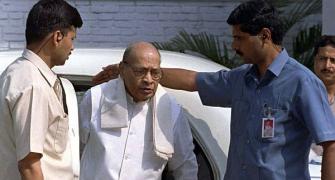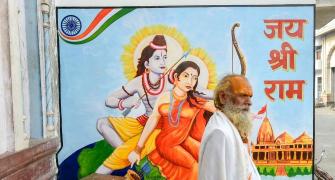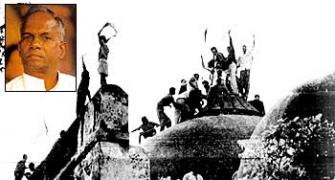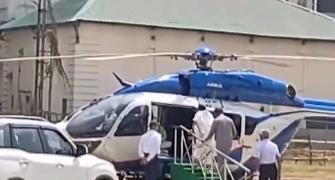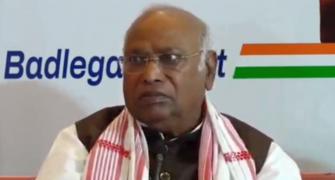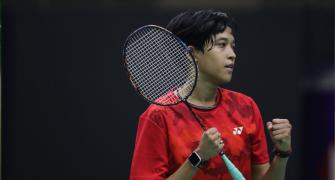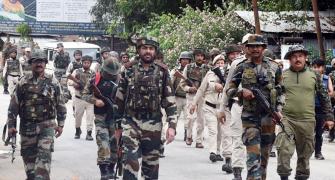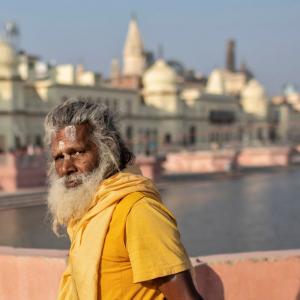Of course, since it was in power, the Congress was responsible for the unlocking of the gates. But who in the Congress? The Congress chief minister of UP, or the Congress president and prime minister, Rajiv Gandhi?
Stray remarks to me by the PM indicated he had nothing to do with this tragic farce and was deeply disturbed.
Rajiv Gandhi was not consulted because he would never have agreed to such an unprincipled step.
A revealing excerpt from Mani Shankar Aiyar's fascinating new book, The Rajiv I Knew.

Writing as I am more than 35 years after these events, I have the advantage of hindsight that Rajiv Gandhi in 1986 did not have.
Yet he spotted that ignoring or surrendering on this issue would promote precisely the kind of majoritarianism that has now overtaken the country, ending, perhaps forever, the secular India that was the quintessence of Mahatma Gandhi's and Nehru's vision of a pluralistic nation, celebrating its diversity instead of being imprisoned in revenge and revanchism, as has turned out to be the case.
After years of reflection as a citizen of my country on the Hindu majoritarianism that has overwhelmed our country in recent years, I have come to believe that it was the unholy alliance struck between the liberal-left and the hitherto 'untouchable' BJP in 1986-90 on Shah Bano and the subsequent Babri Masjid issue that has brought us to the present pass.
So upset were the left-liberals by the huge majority Rajiv Gandhi had garnered in the 1984 election that toppling him, come hell or high water, became their sole objective, with no regard for the consequences in this endeavour of restoring the Sangh Parivar to the mainstream of Indian politics.
It was this that sparked the conflagration of communalism that has since been consuming our country.
In December 1949, a group of about fifty people entered the Babri Masjid in Ayodhya, UP, and placed an idol of Ram Lalla (Ram the infant) in the premises. Fearing communal tensions, the UP government locked its gate.
The Pandora's box was opened nearly forty years later when, in February 1986, by the order of a district sessions court in Faizabad, the gates of the Babri Masjid were unlocked.
That is the origin of the dispute that was eventually laid to rest 33 years later by the Supreme Court judgment of 9 September 2019.
The background to the opening of the locks has been explained in detail by Deoki Nandan Agarwal of the Vishwa Hindu Parishad. He says that Chief Minister Veer Bahadur Singh visited Ayodhya on 19 December 1985.
A VHP delegation led by retired Justice Shiv Nath Katju met the CM to argue that the locks on the gates of the inner courtyard had not been put under the orders of any court or magistrate.
This 'interfered with the free exercise of the Constitutional rights to worship Bhagwan Sri Rama'.
While the chief minister 'quietly listened' to the delegation, he appears to have ordered 'a close search of the records.'
When the matter was thereafter agitated before the district sessions judge of Faizabad on 1 February 1986, the district magistrate 'candidly admitted' that 'there was no order of any court or magistrate for locking of the premises'.
Then, the DM and senior superintendent of police affirmed respectively that 'the locks were not necessary for preserving the public peace' and that 'law and order' at Sri Ram Janmabhoomi could be maintained 'whether the locks were there or not'.
At which the district sessions judge allowed the appeal and ordered the removal of the locks.
The locks were dismantled within a few minutes of the order being given, and a storm of Hindu worshippers surged in.
Of course, since it was in power, the Congress was responsible for the unlocking of the gates. But who in the Congress? The Congress chief minister of UP, or the Congress president and prime minister, Rajiv Gandhi?
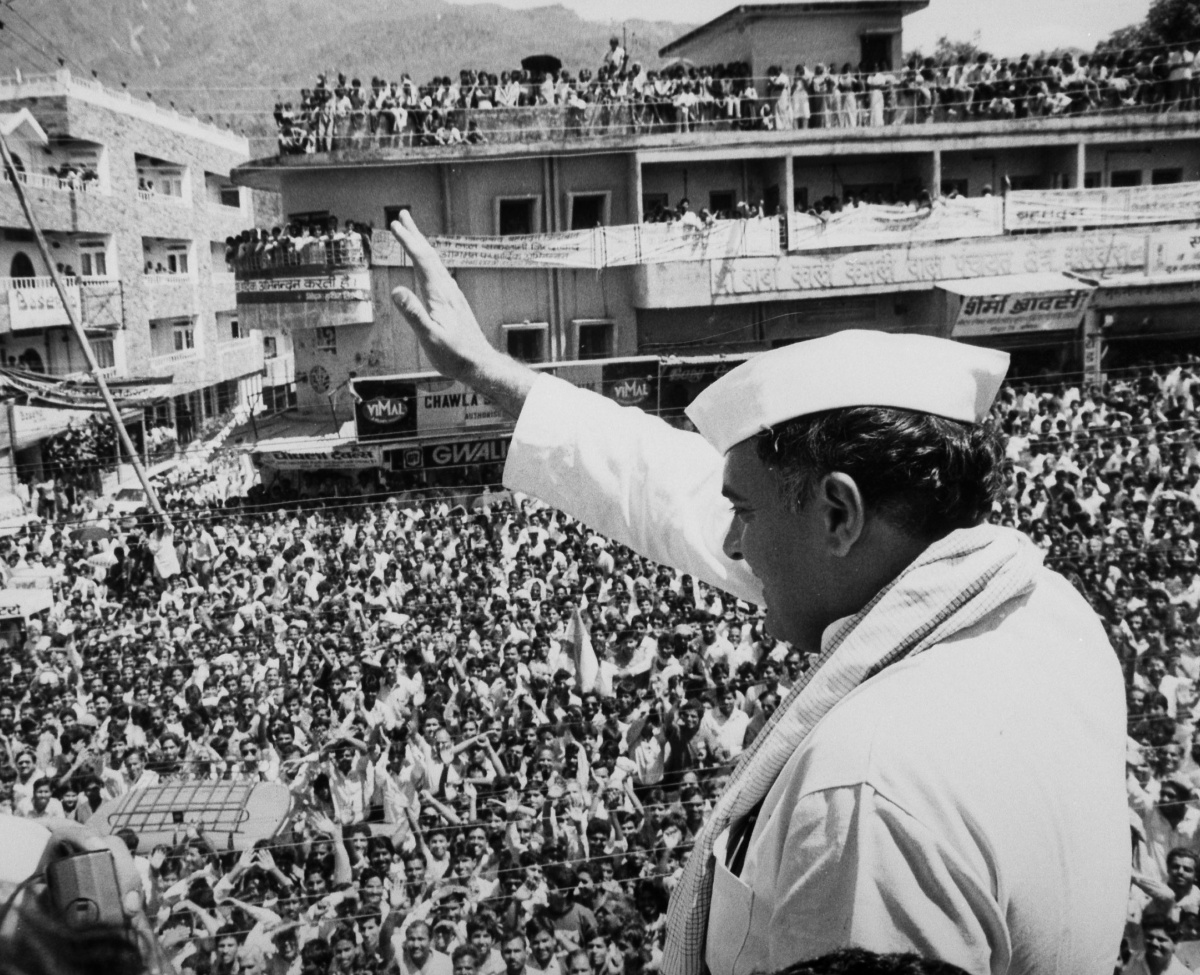
Stray remarks to me by the PM indicated he had nothing to do with this tragic farce and was deeply disturbed.
Another PMO officer, Wajahat Habibullah, handled minority affairs; I was neither asked nor consulted by the PM on the matter.
Wajahat Habibullah writes in his memoirs that he 'put to PM the question of the unlocking of the gates'.
Rajiv Gandhi answered, 'I knew nothing of this development until I was told of this after the orders had been passed and executed.'
He regretted that 'he had not been informed of this action' but suspected it was MoS for home affairs, Arun Nehru, and his political secretary, Makhan Lal Fotedar, who were responsible.
He added that he was 'having this verified. If it [is] true, I will have to consider action.'
The political problem he faced in taking action against Arun Nehru was well illustrated by a profile of Arun Nehru in India Today of 31 October 1985, on the occasion of Arun Nehru's elevation as the junior minister in charge of internal security.
Describing Arun Nehru as the 'fastest rising star in the firmament of Rajiv Gandhi's government', the authors heaped cliche after cliche upon him, describing Nehru as being 'in his element' where he 'exudes a sense of power', with a voice that 'will be heard loud and clear'; as 'the fulcrum on which many key central policies will now turn' and 'will undoubtedly leave his impress on the way the Rajiv administration consolidates its base'.
Yet, in October 1986, just a year after India Today's fawning encomium, Arun Nehru was dropped from the council of ministers.
The internal party enquiry RG had ordered as Congress president revealed that while Arun Nehru was behind the conspiracy to open the gates at Ayodhya, Fotedar was not.
So, Arun Nehru was dropped but not Fotedar.
Thus did Rajiv approach this matter with the utmost rectitude: Punishing the one and sparing the other, although much the easier path would have been to spare the politically powerful Arun Nehru and punish the party apparatchik, M L Fotedar.
The question remains: Could Arun Nehru have acted so decisively in such a manner without informing the prime minister?
Of course, such impudence would have been out of the question in the normal course, but as the same issue of India Today wrote, there was an 'awed realization' within the party of Arun Nehru's clout which was 'in evidence when the party legislators in UP unanimously chose Veer Bahadur Singh, his nominee, as the new chief minister'.
The evidence on record appears to indicate that the hitherto obscure Veer Bahadur Singh had been chosen to fulfil Arun Nehru's ulterior aim of getting the locks opened to consolidate the party's base by pandering to Hindu sentiment.
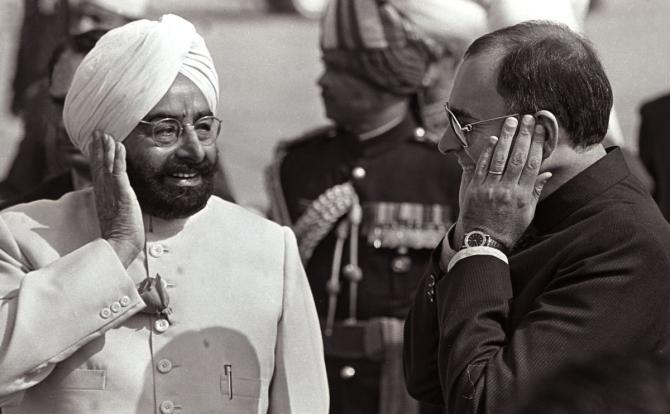
Rajiv Gandhi was not consulted because he would never have agreed to such an unprincipled step.
So, the 'formidable cousin' decided to present the prime minister with a fait accompli, unmindful (or, perhaps, conscious) that this would stir the cauldron of communalism.
And another question: Could the prime minister have restored the locks after they had been unlocked by judicial order?
Only the courts could have reversed the district judge's order on an issue that would undoubtedly have gone to the Supreme Court, taking years and years along the way while religious tension simmered.
Besides, the Faizabad session court's judgment had already been challenged in the Lucknow bench of the Allahabad high court by a Sunni Muslim, Mohammed Hashim, and this was followed by the Sunni Waqf Board filing its own petition and the state government of UP also intervening.
Any attempt at reversing the session court's order by executive fiat would have only added fuel to the fire.
Therefore, RG set about trying to see whether a political settlement was possible.
To this end, he deputed Home Minister Buta Singh to visit the town in August-September 1989 to explore the possibility of a site in the immediate vicinity of the mosque where a Ram temple could be built without demolishing the masjid.
Buta Singh succeeded, in concert with the disputants, in identifying a possible location for the Ram temple but either did not know or deliberately suppressed the fact that part of this site lay within the disputed area.
When my former IFS colleague, then a distinguished MP, Syed Shahabuddin, approached me to allege that the home minister was misleading the PM, I told him I could do nothing as PMO work was compartmentalised but recommended that as an MP he was entitled to seek an appointment with the PM to explain matters directly to him.
I do not know whether Shahabuddin took my advice, but the country was soon caught in the flurry of general elections, in which the foundation-stone-laying ceremony of the temple, the shilanyas, became the single most important cause for Rajiv Gandhi's defeat.
Through most of the year following his defeat, Rajiv Gandhi was preoccupied with finding an answer to this temple/masjid crisis.
He closeted himself with a well-chosen cabal of advisers to work out an alternative plan for dealing with the crisis.
I was not part of the cabal and only came in when it was time to draft RG's recommendation to the then PM, Chandra Shekhar.

Siddhartha Shankar Ray, the statesman-jurist, was in the forefront of making the argument that the crux of the issue lay in determining whether Babar's general, Mir Baqi, had in fact destroyed an extant Ram temple to erect the Babri Masjid or whether he had only built the mosque on unused land that was now being claimed as the birthplace of Lord Ram.
He suggested that it be left to the Supreme Court to pronounce its view on this limited but telling question after hearing the historical and archaeological evidence from respected experts.
Ray argued that there were two ways of securing a definitive Supreme Court view on the 'key question': Either by a judgment under Article 142 or by an advisory opinion under Article 143 of the Constitution.
Under Article 142, the Supreme Court view would be expressed as an order that 'shall be enforceable throughout the territory of India'.
If raised before the Supreme Court as a presidential reference under Article 143, the court's finding would be a non-binding 'opinion' expressed to the president.
Ray preferred raising the issue in the Supreme Court under Article 142 as that would result in a 'binding' order.
Another alternative was to request the Supreme Court to convoke a commission of inquiry under Section 3 of the Commission of Inquiry Act, 1952, comprising five sitting judges of the Supreme Court, selected by the chief justice of India, to determine the question of fact as to whether, at the site of the dispute, a Ram mandir was in fact destroyed to build a masjid in its place.
If it was held that such a commission could not be established owing to the same question pending before the Allahabad high court, an ordinance or law might be passed under Article 138 enlarging the jurisdiction of the Supreme Court.
In any case, the saffron argument was that Lord Ram's birthplace was not a matter of 'fact' but of 'faith' (aasthaa).
Some of these alternatives were put to PM Chandra Shekhar by Rajiv Gandhi in writing and others conveyed orally.
Chandra Shekhar finally decided on Article 143, a non-binding opinion on a presidential reference. That could not, by definition, have definitively ended the matter.
This caused RG considerable annoyance and contributed to his withdrawing support to the Chandra Shekhar government.
Had RG lived to become prime minister in the election that followed, I believe he would have followed the Article 142 route. But fate decided otherwise.
Excerpted from The Rajiv I Knew, by Mani Shankar Aiyar, with the permission of the publishers, Juggernaut Books
Feature Presentation: Rajesh Alva/Rediff.com

